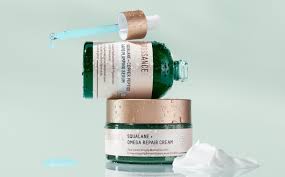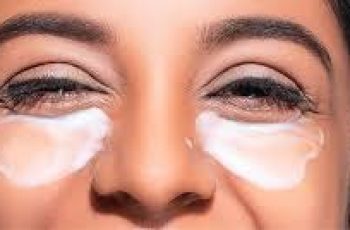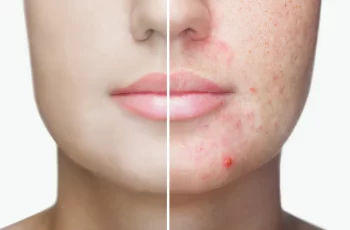
Squalane vs. Hyaluronic Acid: Which One Is More Hydrating? Dermatologists Weigh In
In recent years, skincare enthusiasts and dermatologists alike have increasingly turned their attention to two standout ingredients: squalane and hyaluronic acid. Found in everything from lightweight serums to rich moisturizers, gentle cleansers, and even makeup primers, these ingredients have become staples in modern skincare routines. Their popularity is not without reason—both offer impressive hydrating properties, improve skin texture, and support a healthy skin barrier.
But despite their similarities, squalane and hyaluronic acid are fundamentally different in how they function on the skin. So which is more hydrating? And, more importantly, which one is better for your unique skin type?
To demystify these powerful ingredients and help you decide which one deserves a spot in your regimen—or whether they work even better together—we consulted two leading dermatologists: Dr. Rebecca Marcus, board-certified dermatologist and founder of Maei MD, and Dr. Blair Murphy-Rose, board-certified cosmetic and medical dermatologist at the Laser & Skin Surgery Center of New York and clinical instructor at Weill Cornell Medical College.
What Is Squalane?
To understand squalane, it helps to first understand squalene—yes, with an e. Squalene is a lipid (fat) that occurs naturally in our skin’s sebum. It plays an essential role in keeping our skin moisturized and protected. However, there’s a catch: squalene is highly unstable, prone to oxidation, and has a short shelf life when used in skincare products.
Enter squalane, the more stable, hydrogenated version of squalene. “Squalane is an emollient that softens and smooths the skin and helps to keep moisture in,” explains Dr. Murphy-Rose. “It protects and supports the skin barrier and has antioxidant properties that can reverse and prevent free radical damage.”
Another benefit of squalane? It’s incredibly lightweight and non-comedogenic, meaning it won’t clog your pores. This makes it safe for all skin types, including acne-prone and sensitive skin. Moreover, as we age, our body produces less natural squalene, which may lead to drier skin. Applying squalane topically helps replenish those levels and maintain youthful suppleness.
In short, squalane is a barrier booster, moisture lock, and skin softener—a triple threat in skincare.
What Is Hyaluronic Acid?
Hyaluronic acid (HA) is another naturally occurring substance, found not just in our skin, but also in our eyes and connective tissues. It’s categorized as a humectant, meaning it attracts water like a magnet. And it’s no ordinary humectant—hyaluronic acid can hold up to 1,000 times its weight in water, making it one of the most powerful hydrators in the cosmetic world.
“It acts by drawing moisture into the skin from the surrounding environment,” explains Dr. Marcus. “This gives the skin an immediate plumping effect and can reduce the appearance of fine lines and wrinkles.”
Hyaluronic acid is often favored for its lightweight texture and quick absorption, which makes it an ideal choice for oily or combination skin. Since it hydrates without adding oil, it supports water balance without making the skin greasy.
There are also different forms of hyaluronic acid with various molecular weights. High molecular weight HA sits on the skin’s surface to provide instant hydration and plumpness, while low molecular weight HA penetrates deeper to support longer-lasting hydration at a cellular level.
Squalane vs. Hyaluronic Acid: What’s the Difference?
While both ingredients are hailed for their hydrating capabilities, they do so in very different ways. Their chemical composition, function, and mechanism of action all diverge, which is why dermatologists often recommend using them together, rather than choosing one over the other.
Chemical Composition
Squalane is a lipid—essentially a fat. It mimics our skin’s natural oils and is derived from squalene.
Hyaluronic acid is a glycosaminoglycan, or a type of sugar molecule. It’s water-loving and exists in the skin’s extracellular matrix.
Hydration Method
Squalane functions as an emollient and occlusive. It forms a protective barrier on the skin’s surface to lock in moisture, preventing transepidermal water loss (TEWL).
Hyaluronic acid is a humectant that draws moisture into the skin. It hydrates by absorbing water from the air or from deeper skin layers.
Skin Feel & Finish
Squalane offers a silky, non-greasy feel and leaves skin soft and smooth.
Hyaluronic acid feels cooling, refreshing, and often leaves a dewy finish.
Ideal For
Squalane: Dry, dehydrated, mature, or sensitive skin types. It also suits acne-prone skin thanks to its non-comedogenic nature.
Hyaluronic Acid: Oily, combination, or breakout-prone skin types needing lightweight hydration.
Which One Is More Hydrating?
It depends on how you define hydration. If you’re looking at how much water content is added to the skin, hyaluronic acid wins—hands down. Its ability to bind moisture gives it a superior water-attracting power.
However, if you’re more concerned with preventing water loss, squalane is more effective. It doesn’t necessarily add hydration, but it helps keep the moisture your skin already has from evaporating.
That said, many dermatologists argue that using both together provides the best results—a synergistic effect where HA draws water in, and squalane seals it in. “They complement each other perfectly,” says Dr. Marcus.
Can You Use Squalane and Hyaluronic Acid Together?
Absolutely—and you should. Not only is it safe, but the two ingredients enhance each other’s benefits. In fact, many skincare products now combine both in a single formula for dual-action hydration.
Here’s how to layer them for maximum effectiveness:
Start with hyaluronic acid. Apply it to damp skin right after cleansing. This allows the humectant to pull in water from your skin’s surface or the environment.
Follow with squalane. It forms a seal over the hyaluronic acid, locking in the hydration and preventing it from evaporating.
If you’re using two separate products, ensure your hyaluronic acid serum goes first, followed by a squalane-based oil or moisturizer.
How Often Should You Use Them?
Both ingredients are gentle enough for daily use—even twice a day, depending on your skin’s needs. You can find them in a variety of formulations:
Serums for lightweight hydration
Moisturizers for daily nourishment
Face oils (for squalane)
Sheet masks or eye creams with hyaluronic acid
Consistency is key. Regular use will yield smoother, more hydrated, and more resilient skin over time.
Final Verdict: Which One Is Right for You?
There’s no universal answer—your ideal ingredient depends on your skin type, climate, and concerns.
Choose Hyaluronic Acid if:
You have oily or acne-prone skin
You want a plumping effect and fine line reduction
You live in a humid environment where humectants work best
Choose Squalane if:
Your skin is dry, flaky, or feels tight
You’re dealing with a compromised skin barrier
You need a moisturizer that mimics natural oils
Use both if:
You want maximum hydration and protection
You’re layering serums and creams in your routine
Your skin feels dehydrated and dull
Conclusion
When it comes to the question of whether squalane is more hydrating than hyaluronic acid, the answer is nuanced. Each ingredient brings its own unique method of moisture management to the table—hyaluronic acid by pulling water in, and squalane by locking it in.
The good news? You don’t have to choose just one. Incorporating both into your routine gives your skin the hydration and protection it needs to stay healthy, plump, and glowing. Whether you’re battling dryness, signs of aging, or just trying to maintain a radiant complexion, these two powerhouse ingredients have your back.
As Dr. Marcus aptly puts it: “Both are great for dry skin, acne-prone skin, inflamed skin, and even sensitive skin. It really comes down to personal preference.”


